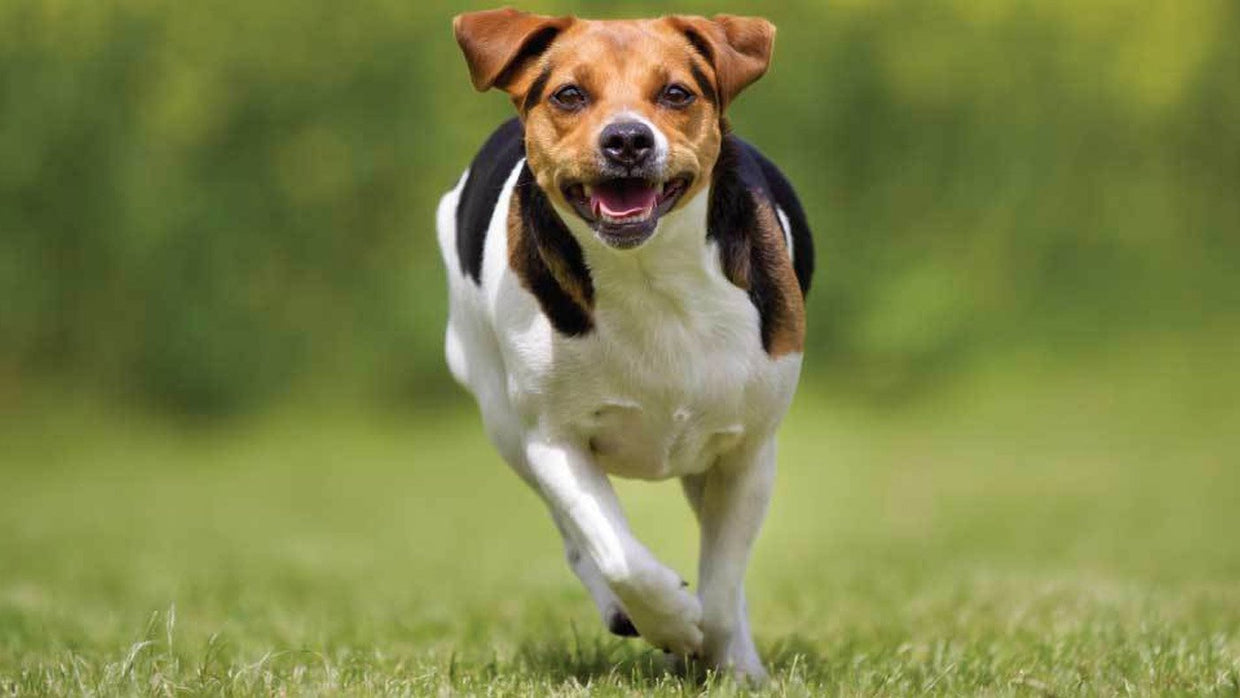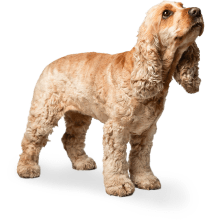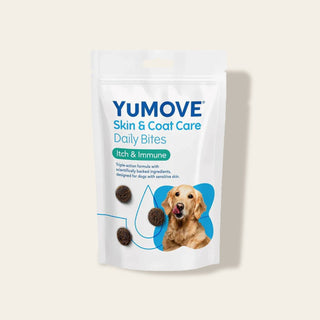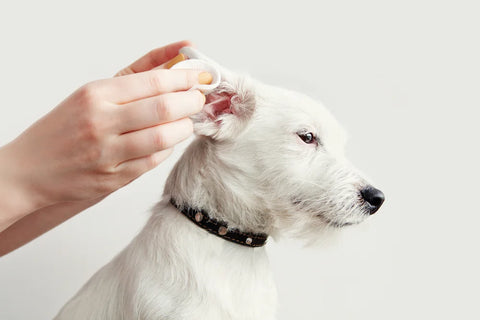

How to support your dog with dry skin this summer
Before heading out in the summer sunshine, it’s likely that you consider your skin. You know it’s important to put on SPF regularly, moisturise your skin, and to take frequent breaks from the sun to protect your skin. But what about your dog? We’re taking a closer look at how to care for their skin and avoid dry skin on dogs this summer.
What are the signs of dry skin on dogs?
First, how do you know if your dog has dry skin? If your dog’s skin is healthy, it will be:
- Pink, black, grey or brown – depending on their colour
- Pest free – no fleas, mites or ticks
- Clean and flake-free
However, signs of dry skin on dogs include:
- Flakes or scurf
- Crusty areas
- Spotty skin
- Itchy skin
- Greasy skin
- Unpleasant smell

How can you help with dry skin?
Here are five ways that you can support your dog’s skin and coat this summer if they display some of the signs above:
-
Protect from within
One way to help with dry skin on dogs is to provide the right combination of Omega-3 and 6 oils to maintain a healthy skin and coat.
YuMOVE Skin & Coat Care Moulting Dog, part of our Skin & Coat supplements for dogs range, is a premium blend of natural, cold-pressed oils that help to reduce excess moulting, nourish and replenish dry skin.
These oils support your dog's skin health with essential fatty acids that can be lacking in their diet. These fatty acids help to replenish your dog's skin barrier. And that’s good news, because a strong barrier helps to stop some allergens entering their system through their skin.
-
Remember, dogs get hay fever too!
Did you know dogs get hay fever? Much like humans, dogs react to different allergens at different times of year. Rather than sneezing, canine hay fever can manifest as itchy skin. A good Omega-3 and 6 oil – like YuMOVE Skin & Coat Care Itching Dog – can help reduce itching.
Read more about dog hay fever here.
-
Always wear sun cream
Can dogs tan? In a word, yes. If your dog has dark skin and a fine coat, you might have noticed that their pigmentation gets deeper in summertime. Conversely, dogs with pale coats can get sunburn. Though it’s a good idea to keep your dog out of the midday sun, it’s not always practical. Protect areas with short or no fur – noses, ears and bellies if they sunbathe – with a dog-safe SPF. Just like with people, remember to reapply if they have a swim!
We don’t recommend using human sun cream on dogs. Your dog may lick the cream off, and some human formulations contain ingredients that are toxic to dogs, including para-aminobenzoic acid and zinc oxide. Fragrances can be irritating to your dog’s skin too, so it’s best to be safe.
-
Soothe any insect bites
Some dogs love to chase insects and could get a nasty surprise if they meet a wasp or bee. If they get stung, try to remove the stinger with tweezers then calm the sting with a soothing, antibacterial spray. If your dog has been stung more than once, contact your vet for advice.
-
Avoid hot pavements
Hot pavements can lead to sore paws, so we generally go by the rule of if it’s too hot to walk on a pavement barefoot, it’s too hot for a dog walk – do your dog a favour and enjoy some time in the shade instead!

When to visit your vet
If you spot any of the following signs on your dog’s skin it’s worth talking to your vet. Though these signs can often be simply solved through nutrition and changes to your routine, some can be a sign that there’s something more serious going on...
Lumps and bumps
Don’t worry or assume the worst – most lumps are benign cysts, warts or skintags – but do always get your vet to check.
Changes in pigmentation
Like humans, dogs can get skin cancer so watch out for changes in pigmentation. An overall darkening of a large area (tanning) is probably fine, but suddenly changing or appearing spots – like human moles – are a cause for a check-up.
Repeated hotspots
A single hotspot that heals quickly is usually nothing to worry about, but if your dog has more than one – or gets them regularly – it could be a sign of an allergy, food sensitivity or underlying issues, especially if your dog is older and has never had hotspots before.
Alopecia (bald patches)
This can be caused by over-grooming (licking and chewing at an area) and hormonal changes (‘blowing the coat’ when a female is pregnant or in heat), but can also be the result of ringworm, ticks or fleas.
Save 20% every month when you subscribe to any product from our Skin & Coat supplements for dogs.



